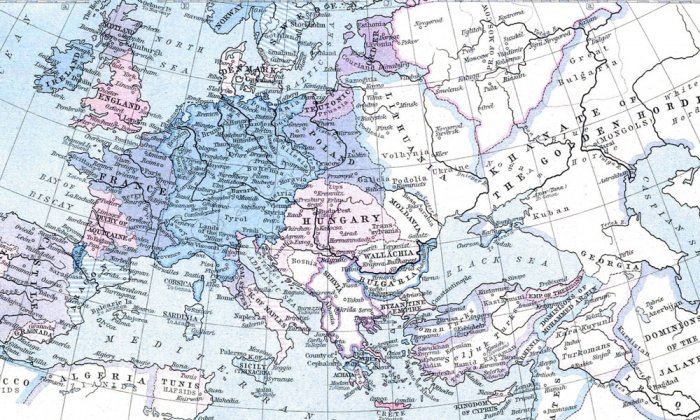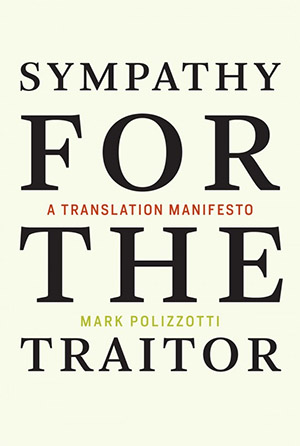The Silences Between: On the Perils and Pitfalls of Translation

The American anthropologist Laura Bohannan once tried to paraphrase “Hamlet” for a tribe of West African bush people. Convinced that “human nature is pretty much the same the whole world over,” Bohannan chose “Hamlet” as a reliable universal archetype. It sounds good on paper, but at practically every sentence, she found her listeners raising objections and interpolations wholly outside her frame of reference:
“Polonius [Bohannan narrates] insisted that Hamlet was mad because he had been forbidden to see Ophelia, whom he loved.”
“Why,” inquired a bewildered voice, “should anyone bewitch Hamlet on that account?”
“Bewitch him?”
“Yes, only witchcraft can make anyone mad.” …
“Laertes [she later resumes] came back for his father’s funeral. The great chief told him Hamlet had killed Polonius. Laertes swore to kill Hamlet because of this, and because his sister Ophelia, hearing her father had been killed by the man she loved, went mad and drowned in the river.”“Have you already forgotten what we told you?” The old man was reproachful. “One cannot take vengeance on a madman; Hamlet killed Polonius in his madness. As for the girl, she not only went mad, she was drowned. Only witches can make people drown. Water itself can’t hurt anything. It is merely something one drinks and bathes in. … [Laertes therefore] killed his sister by witchcraft, drowning her so he could secretly sell her body to the witches.”
Finally, losing patience with Bohannan’s “errors,” the tribal elder takes over the narration altogether, concluding, “Sometime you must tell us some more stories of your country. We, who are elders, will instruct you in their true meaning, so that when you return to your own land your elders will see that you have not been sitting in the bush, but among those who know things and who have taught you wisdom.”
“A language,” as Noam Chomsky observed, “is not just words. It’s a culture, a tradition, a unification of a community, a whole history that creates what a community is.”
As Bohannan discovered the hard way, even supposedly universal truths get filtered through highly local perspectives, and words resonate differently from one country, one collective, one people, to the next. “A language,” as Noam Chomsky observed, “is not just words. It’s a culture, a tradition, a unification of a community, a whole history that creates what a community is.” “Dog,” in whichever idiom, signifies Canis familiaris, but associatively the dog does not mean the same thing to someone who is English, French, or Chinese. Gregory Rabassa has remarked that if you ask a New Yorker what kind of bug Gregor Samsa metamorphosed into, “the inevitable answer will be a giant cockroach, the insect of record in his city,” even though Kafka’s term, Ungeziefer, means simply “vermin.” Similarly, the Russian translator Richard Lourie cautioned that the term communal apartment in English “conjures up an image of a Berkeley, California kitchen, where hippies with headbands are cooking brown rice, whereas the Russian term [kommunalka] evokes a series of vast brown rooms with a family living in each, sharing a small kitchen where the atmosphere is dense with everything that cannot be said.”

At issue here is translation not so much between languages as between cultures, the most recalcitrant text of all, and the most difficult to anticipate. Even a highly representative translation faces the challenge that different readerships read differently. To put it another way: even though readers are not a homogenous block, even within the source culture, at least they share a relatively similar set of associations and secondary meanings, which the author can play upon or take for granted in writing the book. Transpose that set of associations into a culture with its own, dissimilar set of givens, and who knows what will happen? As the writer and translator Tim Parks notes, “However much the writer may prize his individual identity, his book is not the same book in another context.”
It’s true that, to some degree, at least, a great work transcends these disparities. To paraphrase an old ad for Levy’s rye bread, you don’t have to be Jewish — or Czech — to love Kafka. But can you love him in the same way? Beyond any linguistic acrobatics the work requires or references demanding explication, there are ambient assumptions that refuse to be ferried across. And just as the book changes with the context, so too does the translation strategy.
For instance, a text in French tends to run longer than the same text in English, usually by 10 to 20 percent. (On that score, I once had the humbling experience of finding that my translation of a short story by Jean Echenoz, who writes remarkably economical prose, was actually longer than the French original. Much paring ensued.) This is true even on the level of sentences, which according to the rules of good French usage can be longer than English normally allows. What this means is that, in general, a lengthy sentence in French will pass as business as usual to a French reader, but will be perceived as excessively wordy to an English one. The translator wishing to maintain a representative effect might well need to repunctuate, sometimes to break the sentence in two or three.
This is not a universally accepted principle, and many accomplished translators would call this a blatant example of abusive domestication. It’s also not a universally applicable principle: Proust’s marathon utterances, for instance, are lengthy even by French standards and are characteristic of his style; in that case, one needs at least to suggest the unusual extent of his phrasing, without at the same time getting so entangled in the subclauses as to produce gobbledygook. (Much as a few writers in English, such as James Baldwin, have handled impossibly long sentences with grace.) In general, though, I would argue that judicious restructuring brings you closer to the author’s desired effect than a close parallel. As an example, Lawrence Venuti’s comparison of two versions of a 40-word passage by Françoise Sagan, one by himself (42 words), one in the published translation by Irene Ash (29 words), shows, perhaps inadvertently, how much closer Ash comes to Sagan’s tone and punch, while Venuti’s ostensibly more accurate calque just makes it sound dull.
Cultural adaptations can take many forms, often passing by unnoticed, or noticed only when they fail. There’s a scene in Quentin Tarantino’s film “Inglourious Basterds” in which an English soldier in a tavern, who until then has managed to pass as German, orders three glasses, with the corresponding finger gesture. Unfortunately, as an alert intelligence officer observes, he does it with the standard Anglo-Saxon configuration — thumb and pinky looped, index through ring extended — rather than the Continental: thumb through middle extended, last two folded down. By not translating the gesture into the target norm, he gives himself away and unleashes a bloodbath.
The export of popular films is a frequent arena of cultural adaptation, the main intent being not so much to pass as native as to draw in the crowd. The title of Sofia Coppola’s “Lost in Translation,” appropriately enough, underwent any number of international transformations, from the fairly literal (“Unfaithful translation” in Canadian French, “Between words” in German) to more creative options, such as “Lost in Tokyo” in Latin American Spanish and “Meetings and missed meetings” in Brazilian Portuguese (but “Love in a strange place” in Portugal). Not even as seemingly straightforward a title as “Annie Hall” survived the voyage, becoming “Two strange lovers” in Latin America and the harsh but not inaccurate “Urban neurotic” in Germany — though whether that refers to Diane Keaton’s character or Woody Allen’s is unclear.
Not even as seemingly straightforward a title as “Annie Hall” survived the voyage, becoming “Two strange lovers” in Latin America and the harsh but not inaccurate “Urban neurotic” in Germany.
Advertising is a still more fertile ground for adaptations and pitfalls. Everyone has seen foreign food products with names that wouldn’t play in Peoria, including Urinal tea and Pee Cola, Child Shredded Meat, Barfy frozen patties, Only Puke snack chips, Plopp and Fart candy bars … fill in your own examples. And it’s not only about names. A bilingual ad for Air Canada, featuring a husband and wife flying to New York, shows how the narrative is retweaked to suit alternate sets of assumptions: in the English version, Mr. Jackson is “on his way to close an important deal,” while his wife is smiling because “Mr. Jackson didn’t leave her behind this trip”; in the French, M. Gauthier is simply traveling “on business,” while Madame is “happy for this distraction from the daily routine, happy to be with him.” The information is the same, but the message has been altered to appeal to the more “businesslike” Anglo and “romantic” Franco sensibilities. Anyone reading the bilingual in-flight magazines of certain airlines or international trains will notice a similar phenomenon. And the Vatican, never one to miss a trick, offers Latin instructions at its automatic cash machine for the resolutely nonsecular (the ancient Romans apparently called their ATM cards scidulae).
As is well known to any translator, one of the hardest, most culture-bound registers to translate is slang. The topic has been discussed at length and there are as many solutions — or nonsolutions — as there are instances to solve. Richard Howard, speaking of French “low life” texts like the roman noir (but a similar claim could be made for any number of languages), points out that “the French have developed a middle language somewhere between the smell of the sewer and the smell of the lamp,” whereas the closest corresponding English slang tends toward “either the very coarse or the very clinical.” In other words, even a private dick in an American noir will not swear like his flic counterpart (leaving aside the fact that most of the French Série Noire crime novels supposedly translated “from the American” were actually written by French writers, using American-sounding pseudonyms to make the books more marketable).
The opportunities for misunderstanding are rife even within the same language, as demonstrated by the recent estrangement of Quebecois and French into two increasingly distinct idioms. As the French-Canadian sociologist Marcel Rioux put it, “Even when the words are the same, they express another reality, another experience.” For Quebecers, the impulse is unabashedly nationalistic, a will to assert an identity of their own, not only against the English-speaking rest of the country but also vis-à-vis the imported culture of France, which many feel no longer reflects their particular concerns. The result, in yet another instance of two nations divided by a common language, is that texts, especially plays, are being retranslated directly into joual to make them more accessible to Quebec audiences, slowly pushing the French of France toward incomprehensibility.
And sometimes the miscommunication goes beyond speech altogether. The story is told of an American professor in Japan who believed from his colleagues’ comments that they had just settled a campus strike, only to realize later that the opposite was true. “You understood all the words correctly,” he was told, “but you did not understand the silences between them.”
Mark Polizzotti has translated more than 50 books, including works by Patrick Modiano, Gustave Flaubert, Raymond Roussel, Marguerite Duras, and Paul Virilio. He is Publisher and Editor-in-Chief at the Metropolitan Museum of Art and the author of, among other books, “Sympathy for the Traitor,” from which this article is excerpted.



